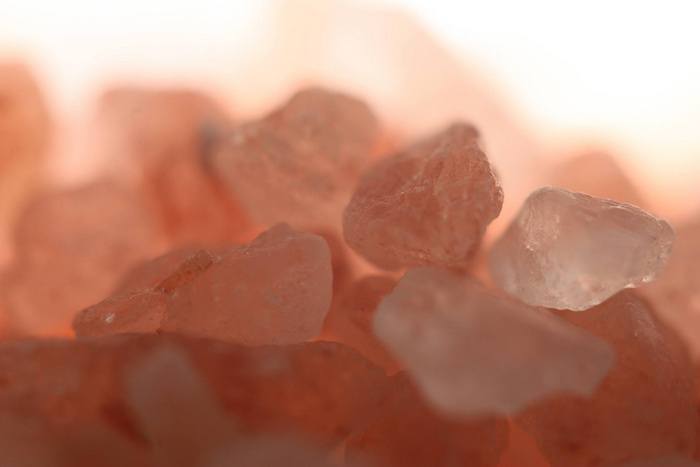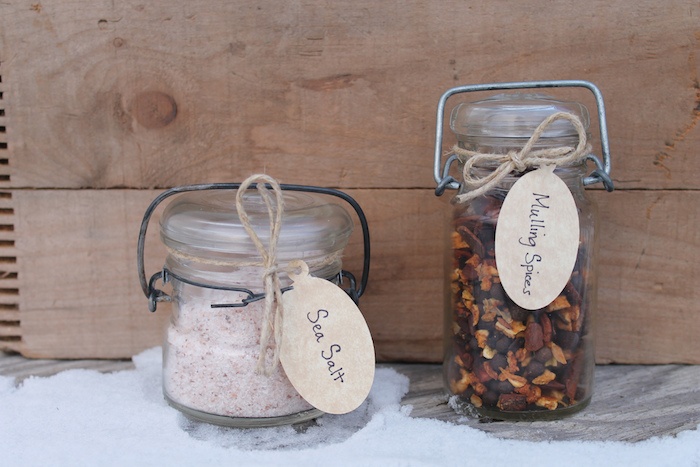What You Need to Know About the Pink Himalayan Sea Salt Craze
 Somehow, in recent years, we’ve gone from seeing salt as some sort of taboo (don't touch the shaker!) to a tasty substance that has—at least sometimes—serious health benefits. How did this happen?
Somehow, in recent years, we’ve gone from seeing salt as some sort of taboo (don't touch the shaker!) to a tasty substance that has—at least sometimes—serious health benefits. How did this happen?
We're pointing to pink Himalayan sea salt, which has the wellness world buzzing, and is purported to be way higher in trace minerals that actually do a body good.
According to its growing fan base among wellness enthusiasts and experts like Joseph Mercola, who enthusiastically recommends (and sells) it, Himalayan salts and their boosted mineral content promote healthy pH balance in the body, improve blood pressure, regulate sleep, and slow the aging process.
(Some consider this craze as the evolution of everyone’s interest in salt spas a few years ago, when salty air was hailed for its healthy negative ions and its ability to soothe stubborn winter sinuses. Some could just be obsessed with remineralizing their depleted bodies.)
And now it's showing up in artisanal food stores, on menus in fine dining restaurants, sprinkled in smoothies, and shaken into healthy macro bowls in kitchens across the country.
So is Himalayan sea salt worth it?
Especially considering that the pink stuff is significantly more expensive than even the trendiest French sea salt? (Himalayan salt is four times as much per ounce, or more.) And, admittedly, while pink is prettier, and the grain a bit larger, the taste is not all that different than Maldon flakes.
The "Yes" camp

{{post.sponsorText}}
"When used for food, we don’t use that much, so while certainly more expensive, it is absolutely worth it," says Lianna Sugarman, founder of LuliTonix, a raw beverage company with a line of blended greens and elixirs.
"I don’t even use the comparison between table salt and Himalayan—they’re totally different entities, the only similarity being their power to add salty flavor to a dish," Sugarman says. "Table salt is just useless for your body, in fact can be harmful. Himalayan salt on the other hand is incredibly beneficial for your body, supplying your body with an array of necessary trace elements in their mineral form—many of which are difficult to get elsewhere."
The "Probably not" camp
The (admittedly conservative) wellness site Science Based Medicine, raised super relevant points about whether the trace minerals in pink Himalayan salt are really present enough to merit the price. New York City nutritionist Ariane Hundt shares that perspective. “To be honest, the scientific evidence isn't so great. The claims are that it contains so many minerals, but the reality is that they exist in such minimal amounts that it would be hard to make claims about it.”

That said, if you're in the demographic that eats kale by the bushel and works out a lot, you might appreciate a nutrition profile that extends beyond table salt's lackluster one. While "we all need to monitor our salt intake, especially if you frequently dine out," adds Hundt, "we also need to ensure we get enough sodium, especially if we exercise a lot and lose it through sweating, work in warmer climates or have low blood pressure."
The purity principle
Other wellness experts, like Dr. Miriam Rahav, an internal and functional medicine specialist at The Kellman Center, say it’s the environmental purity aspect that makes the best case for Himalayan salt and to forget about the "beneficial minerals" argument.
These salt deposits deep within the Himalayan mountains have been there for roughly 250 million years (back when there was a sea there!), Rahav says. “It's very old, unrefined, crystallized sea salt from before we had the chance to do damage to the chemical balance of the seas. It's a much better alternative to table salt," she says.
To salt or not to salt? (Himalayan-style, that is.) Sounds like a good excuse to have a movie-and-popcorn night and test it out! —Ann Abel
(Photos: flickr.com/inquisitive_eye; flickr.com/shalommama)
Want to experience the healthy effects of Himalayan sea salt without sprinkling it on your food? Try a yoga session in a salt chamber or check out these salt lamps said to release healthy negative ions. And let us know how it goes!
Loading More Posts...